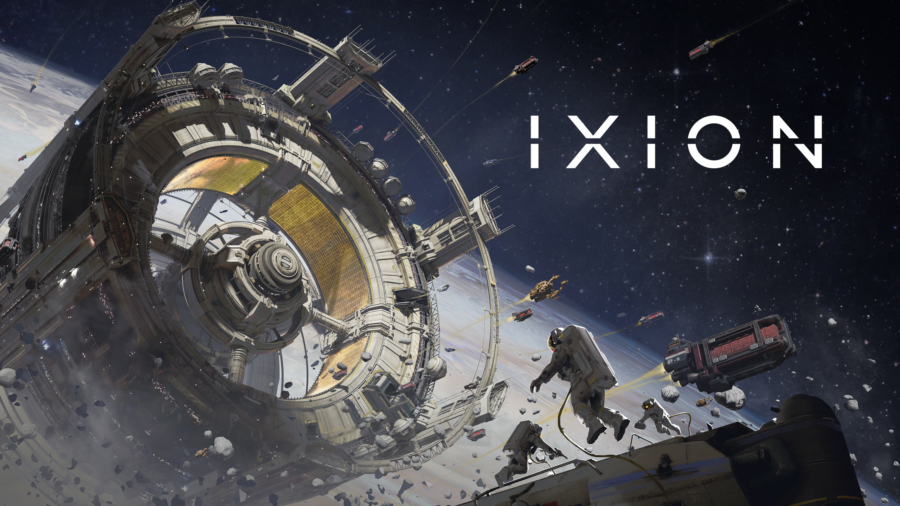Ixion (2022) Spiel
Ixion management simulation relies on cargo and storage system, where each section — the Tiqqun has six sections— has its own individual resources, and within it, each building has its own inputs and outputs. These resources have to be transported via road. If you happen to have played Simcity, you would immediately notice the similarity between the two, and how the agent system is glitch-prone —because it is in this game as well. But most importantly, the system in question doesn’t offer unique outlook for the sci-fi space ship.
Take, for example, gravity and oxygen. On rotating wheel station Tiqqun, both are plentiful irregardless of power supply. Malfunctioning or strategically disabling critical life support systems on space ships have been major tropes for sci-fi, and it can be seen on most games in the survival sim. FTL: Faster Than Light also features a hazard system where if a room of the ship can catch fire, the player can choose to strategically expose the room to the space to put it out. In Ixion, it appears gravity and oxygen are given, and only way to handle hazards is by traditional means —sending a firetruck, just like any other resources. It ultimately begs the question: how is Tiqqun different as a sci-fi colony, aside from its unique donut layout?
As for the non-environmental resources, the game only offers one unique path to acquire more: space-mining. In of itself is not an issue. It’s the other, more universal, path that breaks the game: recycling. On Tiqqun, albeit the crews’ distaste toward recycling, —are they all Americans?— waste can be recycled into all manners of resources. In a way, this system sparks sci-fi flavor by allowing the station to become self-sufficient. By the end of chapter 2 or 3, I suspect most players would already have fully developed, self-sufficient station, ready to take-on any obstacles the game is willing to throw at it.
On the exterior of the station, the player can choose to upgrade solar panels and some other miscellaneous items. As much as I enjoyed the space scenery only visible from the exterior view, the exterior view is fundamentally no different from the reactor upgrade of FTL, or a power plant add-ons from Simcity. Panels constantly output the same amount of power irregardless of the station’s position from the star, or the space weather. And while they can be damaged, a seasoned sim player would not expose them to harm more than once. Its course can be arranged via star system map, which again, felt detached from the station’s inner systems.
The replay value of Ixion is minimal as the game doesn’t offer alternative means of survival. In theory, the player can choose to create a resource-hungry, Ishimura -like, asteroid devouring station, but it’s purely roleplaying. One of the in-game hazards, which is supposed to be an emergency, is disrupting mess hall and all it takes to fix it is to manually power it back on — it lacks the spice to make it more immersive. Speaking of role playing, there are extra sci-fi themed subplots to be uncovered. But much like the trust system, I felt the backstories to be only in the background, no longer living on the station with the rest of the populace.
Conclusions: Harder than Simcity
As a colony-building survival sim, the game offers little for precarious maneuvers only available in space, let alone the rule of three in survival. Problems cascading from one to another brought Tiqqun to life, but I believe it is a testament to the fact that I enjoyed the game more as an invisible “mayor” of a town, not as a “captain” of the last city of humanity. The difficulty of Ixion seems to stem to originate from the agent system; which is a challenge city-builder fans would be excited to see. If you were a fan of city-builder, managing traffic and resources without handholding tools from the game for a tiny space city wouldn’t be a problem.
